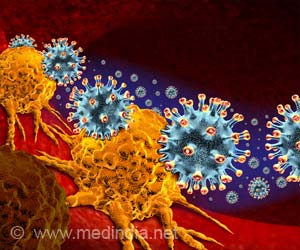Researchers from John Hopkins have figured out the genetic code for a type of pancreatic cancer called neuroendocrine or islet cell tumors.

For the new study, the team investigated non-hormonal pancreatic neuroendocrine tumors in 68 men and women. Patients whose tumors had mutations in three genes - MEN-1, DAXX and ATRX - lived at least 10 years after diagnosis, while more than 60 percent of patients whose tumors lacked these mutations died within five years of diagnosis.
The Johns Hopkins team, which previously mapped six other cancer types, used automated tools to create a genetic 'map' that provides clues to how tumors develop, grow and spread.
Within the code are individual chemicals called nucleotides, which pair together in a pre-programmed fashion to build DNA and, in turn, a genome. Combinations of these nucleotide letters form genes, which provide instructions that guide cell activity.
Changes in the nucleotide pairs, called mutations, can create coding errors that transform a normal cell into a cancerous one.
The most prevalent mutation, in the MEN-1 gene, occurred in more than 44 percent of all 68 tumors. MEN-1, which has been previously linked to many cancers, creates proteins that regulate how long strands of DNA are twisted and shaped into dense packets that open and close depending on when genes need to be activated.
Advertisement
Of the samples studied, mutations in DAXX and ATRX were found in 25 percent and 17.6 percent, respectively.
Advertisement
The work has been described in Science Express.
Source-ANI













